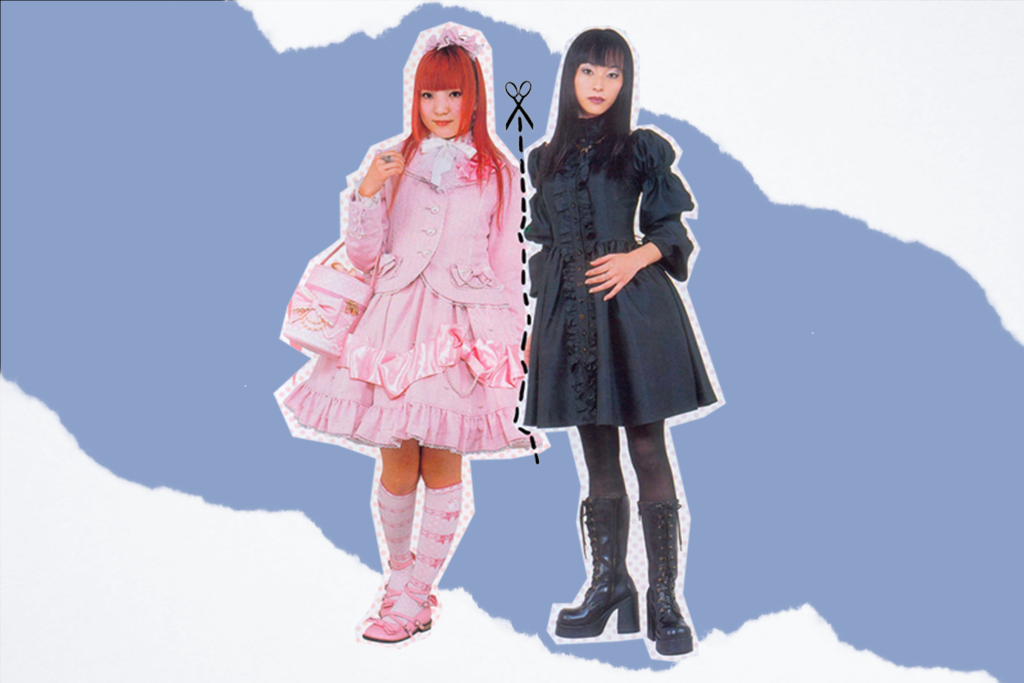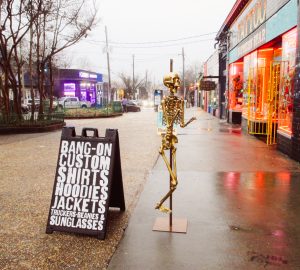
Lolita fashion is famous for creating a fantasy world of “lace, frills and ribbons like a fairytale princess.” The term took hold over the public after it emerged in Ryuko Tsushin Magazine in 1987. Inspired by Dolly Kei, this type of streetwear emphasized the airy, feminine silhouettes most commonly associated with princesses and ball-joint dolls. Some of the mainstays of lolita fashion include a “cupcake” shaped bell skirt, detailed layers of frills, bows and color coordinated accessories. The major pillar of the concept is its idealism and ability to craft an escapist fantasy, far away from the rigidity of modern social constructs.
At the same time of it’s creation, alternative fashion was on the rise in Japan in response to a post-war period of social repression, and 2009 saw the appointment of the first Ambassadors of Cuteness. Japan’s Minister of Foreign Affairs created the title in order to spread international awareness of lesser known facets of Japanese culture. Also known as the Trend Communicator of Japanese Pop Culture, the award was meant to honor the women who were popularizing the Lolita trend.
Despite an incline in popularity on sites like Instagram and Tumblr during the mid 2010’s, Lolita fashion remained niche in mainstream American culture. Even now, with Tiktok fashion subcultures at an unprecedented high, it is unclear as to why a fashion as storied and prolific as Lolita had never quite found its footing with western audiences.
However, like many things that seem too good to be true, the devil can be found in the details. On the surface, Lolita fashion is a wonderland of dreamy colors and impossibly beautiful gowns. Unfortunately, a closer look reveals the cracks hidden in its sparkly veneer.
The Price of Pretty
One of the pitfalls engulfing the western Lolita fashion community is the inaccessibility of many brand-name ensembles. The first thing that an aspiring Lolita may notice is the exorbitant price of the items. A single dress can run the common buyer hundreds of dollars. New standard dress releases start within the $200 – 400 range and exclusive dress releases can run costs that reach into the thousands.
I need y'all to stop me from falling back down the lolita hole. I just wanna be a princess but it's too expensive 💀 pic.twitter.com/w10UQbhCrx
— Aly but spooky @ resting✨ (@aluskee) June 22, 2022
If the purchase of a Lolita dress threatens to significantly lighten a buyer’s wallet, then they may find their dreams crushed before they even reach checkout. Due to the strict requirements upholding Lolita fashion, several garments are necessary to complete a “coord” or a “coordinated ensemble.” Lolita is a visual-kei fashion sub-style which means that in order to associate with the aesthetic, there must be an adequate amount of visual signifiers to the genre. These signifiers include a blouse, petticoat, bloomers, over-the-knee socks or tights, appropriate choice of shoes and headwear. Customers that had purchased a dress without these items were often advised by members of the western community to not wear the dress at all.
This left fans of the style with limited funds in a poor position. Brands like “Angelic Pretty” and “Baby, the Stars Shine Bright” do offer a variety of matching under and outerwear but these items sell between 50 and 100 USD per piece. A single coord can average at a cost of thousands of dollars and years for the average consumer to complete. With prints constantly rotating in and out of season, many Lolita-hopefuls found themselves at a loss.
Milky Pony Carnival series launch this Friday 8/4 @ 12pm PST!! https://t.co/vFwMIugivV #angelicpretty #milkyponycarnival pic.twitter.com/lvfbd3XyHQ
— Angelic Pretty USA (@AngelicPrettyUS) August 1, 2017
Purchasing items secondhand is no picnic either, as the sale of counterfeit “replicas” has been on the rise since the mid 2010’s. A replica refers to a blackmarket garment that has pirated images and designs from mainstream Lolita brands and is sold at a deflated price.
its always heartbreaking to see someones intro into lolita being a replica dress. like you want to let them know gently what the issue is but on the other hand i ain't touching that can of worms.
— Looking for work opportunities (@ArtPastelKelsey) December 7, 2021
Seasoned Lolitas (a name for those who partake in the lolita sub-genre,) condemn the purchase and display of replica garments. It doesn’t matter whether a replica was bought intentionally or unwittingly, those found creating a social profit by displaying the piece are shunned. Even customers who have mistakenly purchased counterfeit dresses experience a sunk cost because counterfeit pieces cannot be resold due to the stigma surrounding them.
The lolita community has made my boyfriend feel bad about himself for giving me a replica. The absolute sweetheart gifted me an AP sugary carnival replica because he thought I would like the print. He has no knowledge whatsoever and it was just a really sweet gesture.
— Angie 🌸 (@Aernalys) April 1, 2019
Although Lolitas throughout the decades have tried to circumvent this stigma by only purchasing non-descript replica items like blouses, petticoats and socks, they soon realized that they were not exempt from the laws of the Lolita fashion police. Lolitas would find themselves exposed in their local communities for their part in the support of replica sales, and were swiftly excommunicated.
Angelic, not Accessible
Lolita is notoriously inaccessible, both monetarily and physically. Despite being an aesthetic subgenre for nearly forty years, most mainstream Lolita brands have yet to expand their size ranges beyond straight bodies. “Angelic Pretty,” one of the few brands with a storefront in the U.S., maintains its universal waist size of 76 centimeters. Other brands like “Moi-Meme-Moitie” has a slightly better range of 68-80 centimeters for their waistbands.
Being plus size in lolita fashion is frustrating. Garments are more expensive, or we have to spend even more money getting clothes tailored. We dont see models who look like us in the clothes we want to wear. Tyler Willis's video on fat shaming in lolita started the dialogue.
— beeps is at sad camp (@cyrillicbullet) July 17, 2020
In part due to Lolita fashion’s strict rules surrounding replicas, prints dedicated to offering a broader spectrum of exclusive sizing are not exempt from negative connotations. Plus-sized fans of the fashion were often left out of the community, if not pushed out.
Thankfully, “Metamorphose Temps De Fille,” a sweet Lolita brand established in the nineties, has recently developed a line of size inclusive clothing that feature dress and skirt sizes that span up to 145 centimeters. However, they seem to be just one of the mainstream brands that have made adjustments based off of the public outcry for more inclusive sizing.
Yes let's have a Lolita replica dress debate AGAIN and not discuss the socio-economic issues or lack of size options associated with why people may engage in replica buying /creation OR discuss how DIYing lolita is largely looked down upon.
— THEY BAE BAE (@Kaiser_iscursed) August 14, 2020
Moreover, there is also a lack of gender inclusion found in Lolita. This compounded Lolita fashion’s inflexibility, leaving little room for those who don’t identify as traditionally femme. With the exception of “Alice and the Pirates,” most Lolita brands rarely branch into androgynous silhouettes. Even these more androgynous styles lack size diversity. Fans of the fashion that are taller than the average 5′ 5″ often find that pants and blouses do not fit them.
Alterations of original prints are also frowned upon in the general community, although this portion of Lolita etiquette has seemingly fallen out of favor with the masses.
Will Lolita be Lost?
Fashion fans around the globe have historically been attracted to the evolution of style as an outlet for creativity. With the lack of probable accessibility, it is no secret as to why Lolita has yet to take off in the western fashion world. Although the sub-style manages to capture the eyes of admirers and artists alike, its refusal of fluidity seemed to cement its status as niche. Only time will tell what will happen to the iconic and frilly Lolita style.





















